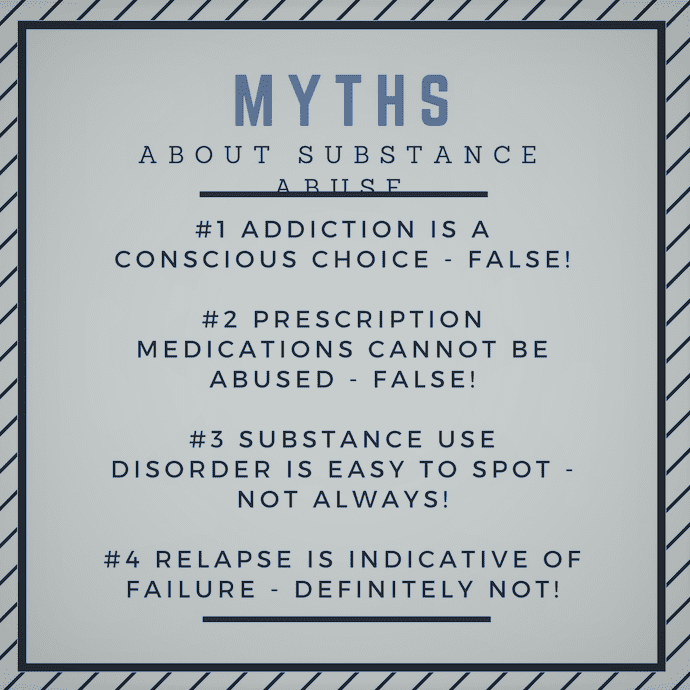Myth-busting: Substance Disorders
Despite substance disorders being common, several misunderstandings still prevent acceptance and healing. On a biological level, addiction is similar to other diseases that interfere with an organ’s ability to operate normally, most commonly the brain. This does not imply that other parts of the body are unaffected by this disorder, rather, substance use can have a variety of negative effects on one’s health as well as alter behaviour. Let us look at the definition of substance disorders below and examine some widespread misconceptions.
What do Substance Disorders look like?
Substance disorders encompass various classes of drugs which includes: alcohol; caffeine; cannabis; hallucinogens; inhalants; opioids; sedatives, hypnotics, anxiolytics; stimulants; tobacco; and other unknown substances. The direct activation of the brain’s reward system, which is involved in the reinforcement of actions and formation of memories, is a feature shared by all drugs used. They cause the reward system to become so intensely activated that they might disregard daily tasks.
Myth 1 – Addiction is a choice.
Many people think that addiction is a conscious disease and that someone who voluntarily began using substances may easily stop. Substance use can quickly take over a person’s life and interfere with the brain’s reward circuits, even if they start using substances of their own free will. A person may become so dependent and tolerant of substances that they stop feeling like themselves. Their bodies may start to depend on the substance if the use becomes an obsession.
Myth 2 – Prescribed medication cannot be abused
A prescription medication does not guarantee that it will not lead to an addiction. Your risk of becoming addicted can be increased even by taking medications differently or more frequently than prescribed. Abusing prescribed medications can also have negative effects. Similarly, alcohol consumption, which is regarded as acceptable and safe in our culture, is one of the most widespread substances that can be abused and becomes highly addictive.
Myth 3 – Substance Disorders are easy to spot
To determine whether someone has a substance disorder, people may use factors such as socioeconomic status or gender. However, substance disorders can affect people of any gender, status, or colour, like most other mental health illnesses. Some individuals link specific actions, such as being unable to go to work with addiction, although this is not the only symptom or manifestation of addiction. Relationships, health, and mental well-being may all be impacted.
Myth 4 – Relapses indicate failure
Addiction relapses are a common and necessary part of the healing process. They are viewed as therapy milestones rather than a failure. The prognosis is improved because each time a person successfully recovers from a relapse and enters therapy, they are less likely to do so again.
Above we looked at some common misconceptions about substance disorders. Reach out for more information and direction if you or someone you know is dealing with a substance disorder. Substance disorders are concerning medical illnesses that can cause harm, but they can also be treated.
If you think that you can benefit from professional support on this issue you can reach out here.
Charlot Cauchi is a Gestalt Psychotherapist at Willingness. He has experience working with adult clients with mental health difficulties, anxiety and depression, loss and grief, traumatic experiences, stress and relational issues.
References
- American Psychiatric Association. (2013). Diagnostic and statistical manual of mental disorders (5th ed.). American Psychiatric Association.







